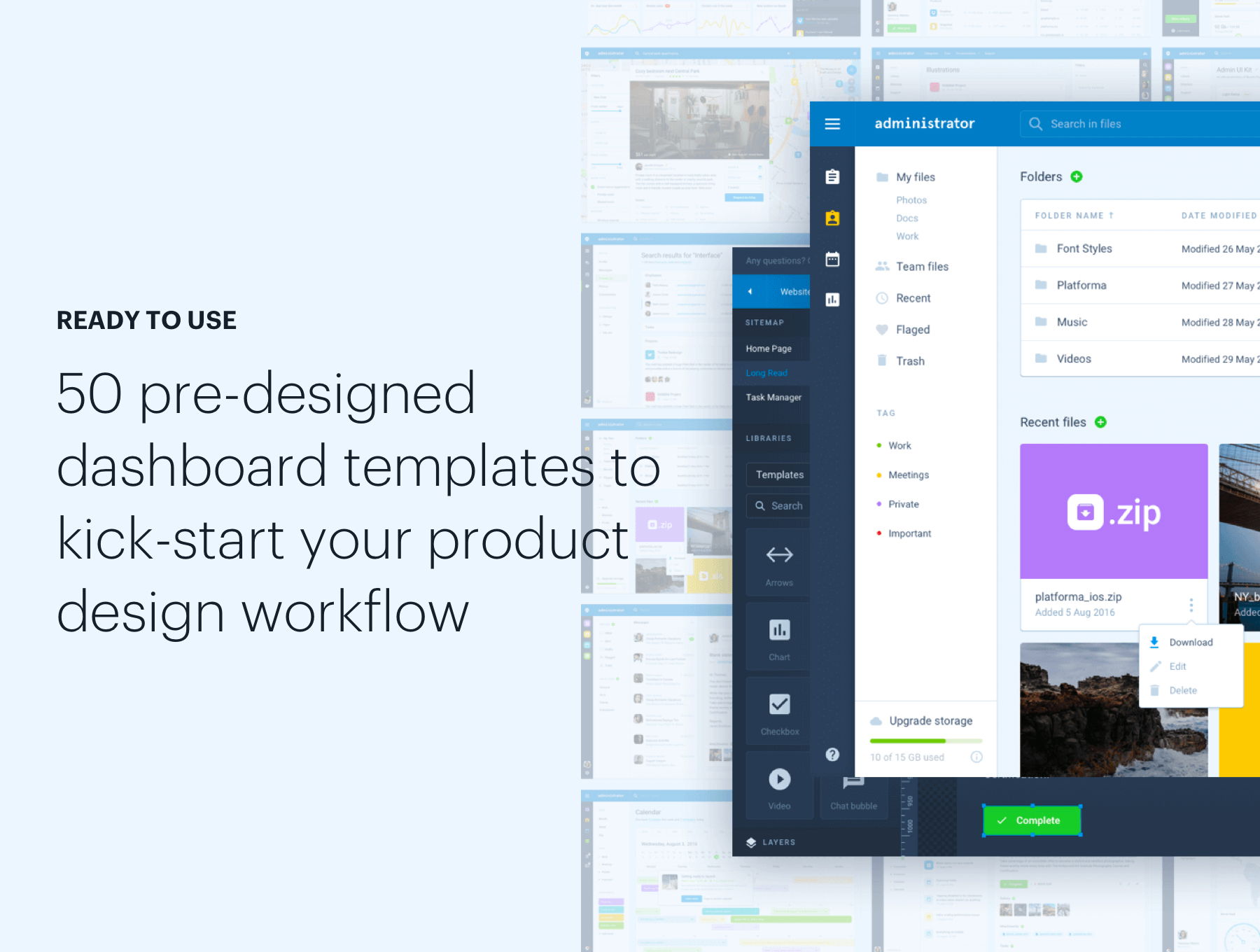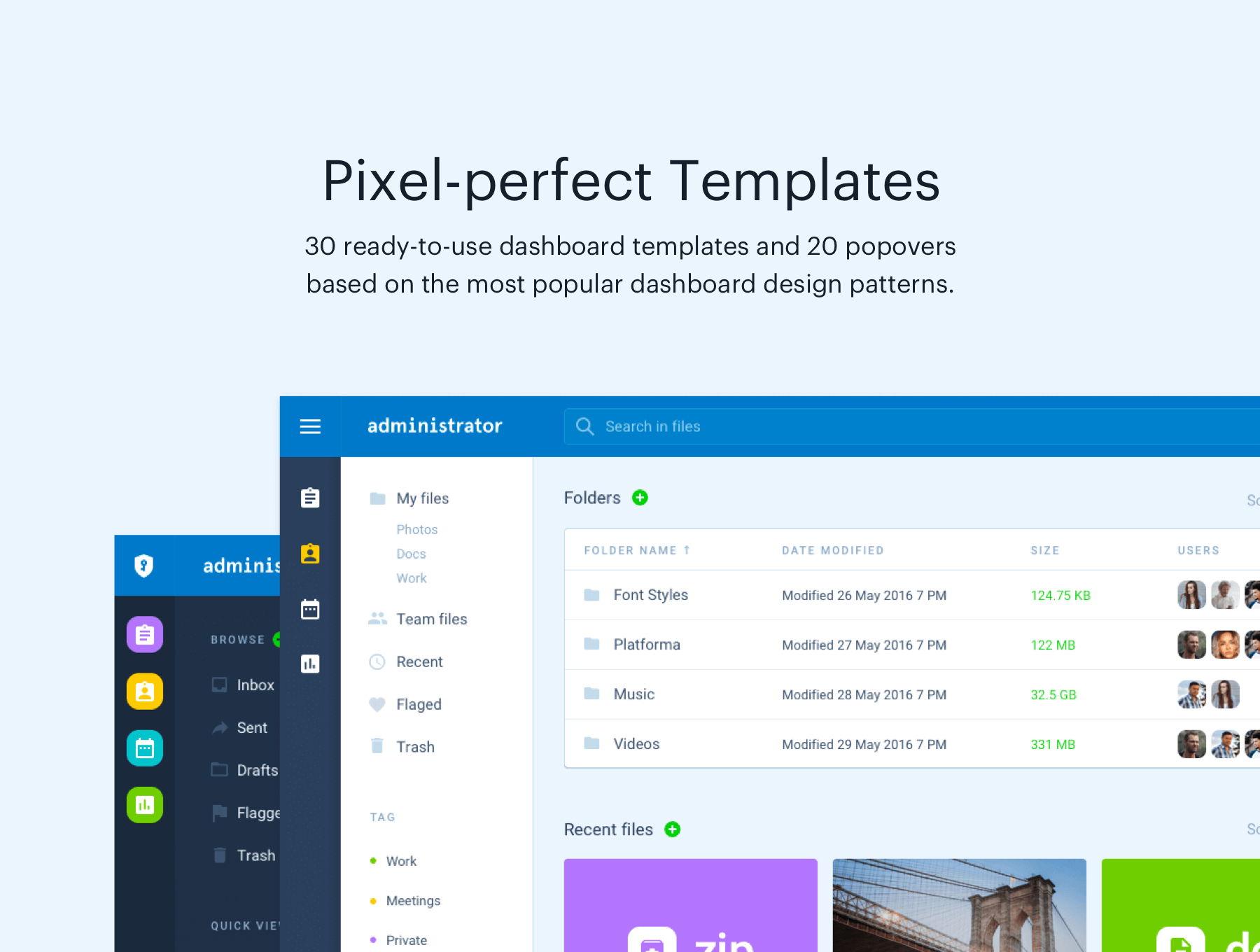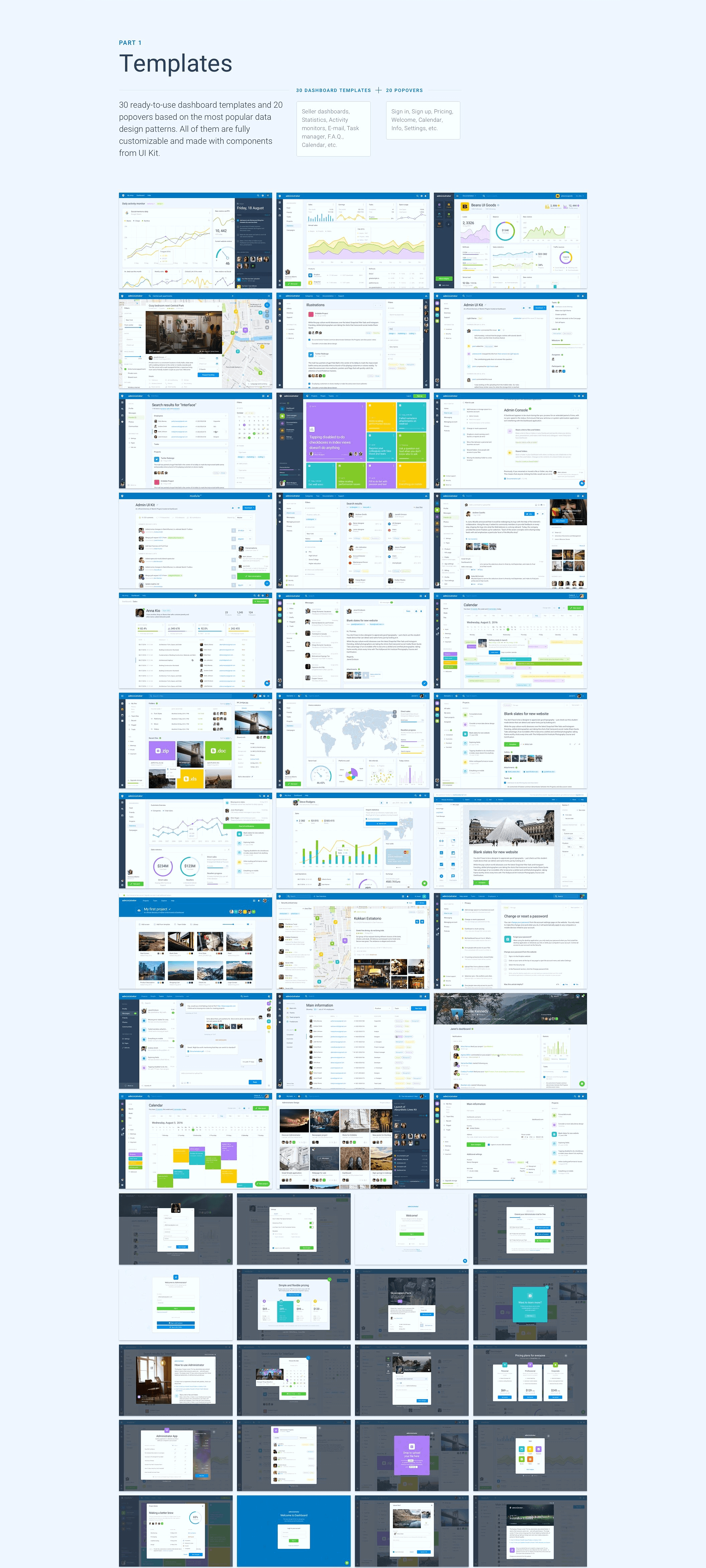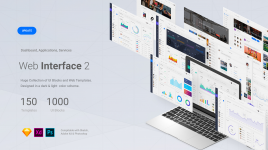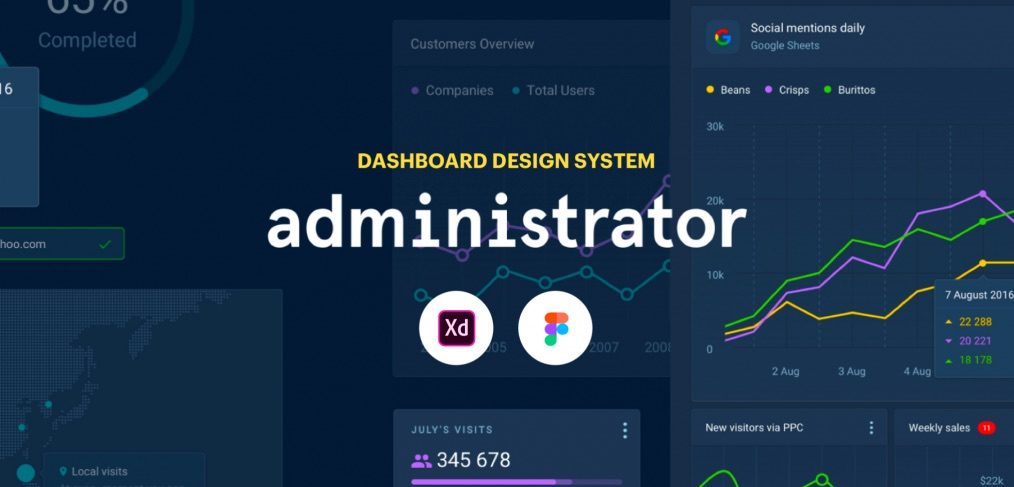
Administrator – Premium XD Dashboard UI kit
Today we are featuring yet another fantastic XD Premium Resource created by the awesome designers at Great Simple.
Administrator is a complete Dashboard & Admin design system for Adobe XD.
It’s an incredible collection of professional, sleek-looking dashboard screens and UI components, fully customizable and ready-to-use in your own XD projects.
All screens are available in dark & light color schemes.
It’s the ultimate premium UI kit allowing you to quickly get started with the design of any admin or dashboard interface.
What’s included in this kit:
• 30 dashboards & 20 popover templates
• Dark and Light Mode
• 200+ Components
• 9 Categories
• Organized layers & typography styles
• Designed with and for Adobe XD
Full preview here: Dark Mode or Light Mode

